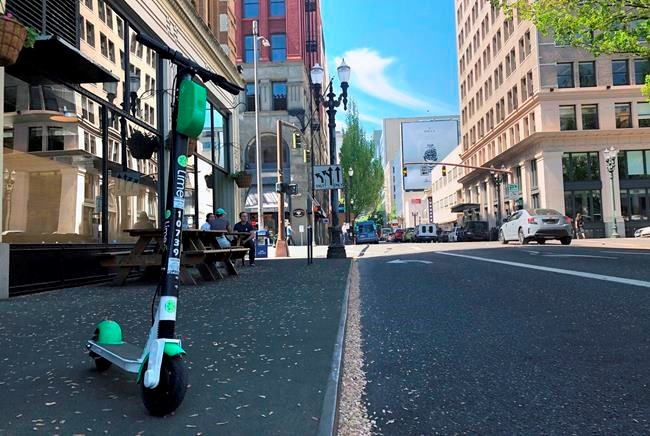Editor's note: A dozen people from Prince George, including city councillors and Citizen reporter Mark Nielsen went to Portland, Oregon in October 2008 to learn how that city was dealing with the homeless and downtown revitalization. With the city's downtown task force set to get to work in the new year, here are Mark's stories from that trip.
PORTLAND, ORE. -- From paying for stepped-up security patrols to establishing a daytime gathering place for the homeless, downtown Portland merchants have put their money into schemes and strategies to ensure their patrons come away from the area feeling they would like to come back.
They may not be the only reason pedestrian traffic jumped 25 per cent during the 2007 Christmas shopping season, but the measures were a factor, according to Megan Doern and Norm Sharp of the Portland Business Alliance.
Sharp, a retired police officer who directs the PBA's Downtown Clean and Safe initiative, proudly notes crime has dropped 30 per cent in the 213-block area in the three years since a 13-person security patrol was introduced via a volunteer tax levy paid by downtown property owners to act as an additional set of eyes and ears for the Portland police department.
"That's a significant drop," he said.
Another move was to enact an ordinance against panhandling and sitting on the sidewalks about a year and a half ago.
"There are some rough people that come through town sometimes and it allows police officers to come up and engage them and it can lead to further conversations about their behaviour and what they're doing and sometimes it even leads to finding out if there's a warrant for their arrest," Doern said.
Coinciding with the enactment, downtown business owners helped finance a day-access service centre for people out on the street -- like in Prince George, emergency shelters in Portland are open only during the night. The centre houses a washer and dryer, television and some medical, mental health and other social services.
"Especially in the winter months, there are 70 to 80 people there at a time," Doern said.
For those caught committing minor crimes downtown, a community court is now up and running where the judge metes out community service time for acts of vandalism and public drunkenness. The sentences are usually spent cleaning up graffiti tags or working in a soup kitchen.
And for first-time shoplifters, there is now the option of a theft accountability class where they learn from business operators about the consequences of their actions.
"There's a very, very low recidivism rate out of this class," Sharp said. "There is, I think, a less than one per cent return customers."
Public bathrooms, sometimes a topic of conversation in Prince George, are located throughout the downtown including a 24-hour one at city hall, while there are also plans for another one in the Old Town area closer to the Willamette River, where there tends to be more homeless people.
The PBA is also involved in the city's Housing First program, which has found stable housing for more than 1,500 homeless in two years. Through a social agency, it has hired a contingent of homeless now off the streets to clean graffiti off the walls.
Asked what Downtown Prince George should concentrate on, Doern said the improved security has reduced crime and pushed the number of people who feel downtown is a safe place to 97 per cent, according to a recent survey.
"That's where we've seen a lot of success," she said. "If people feel safe and they know it's clean, they'll come down and they'll shop."

.png;w=120;h=80;mode=crop)

